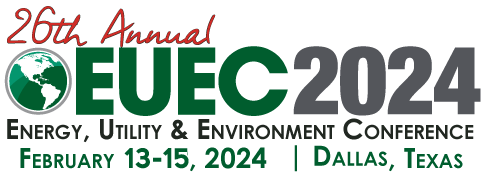Rob Kavet, Electric Power Research Institute
Since the beginning of AM radio broadcasting in the United States about 100 years ago, and through the advent of FM radio and TV, radio-frequency electromagnetic waves have been ubiquitous in our outdoor and indoor environments. Today, wireless technology is used by well over 200 million cell phone subscribers in the U.S., and thanks to wireless communications, our police, fire, and emergency medical personnel are prepared to respond instantly to critical situations. The electric utility industry is incorporating wireless technologies into the development of a nationwide “smart grid” to deliver electricity ever more efficiently and reliably. Coordinating electric transmission and distribution infrastructure functionality with the customer interface, the resulting smart grid can achieve significant gains in reliability, capacity, and demand response and also offer value-added customer services. An essential component of the future grid is a network of wireless communications enabling one part of the grid to communicate with another, assuring that electric load flows are evenly distributed and undesirable situations, such as outages, avoided.
“Smart meters” are an integral component of this emerging infrastructure, collecting and wirelessly transmitting data on electricity use from residential, commercial and industrial sites. This technology thus informs customers about their electricity use and the utility about consumption patterns in its service area, enabling effective planning for load growth and other contingencies. For example, a smart meter system can monitor and pinpoint the extent of an outage, allowing a utility to restore service more efficiently.
Here are some relevant facts about the health and safety aspects of electromagnetic fields from smart meters:
- First, organizations including the Federal Communications Commission, the International Commission on Non-Ionizing Radiation Protection (which works in cooperation with the World Health Organization), and the IEEE, a professional society of electrical and electronic engineers, have all published exposure limits for electromagnetic fields based on in-depth expert reviews of the health and safety scientific literature. All agree that the only established adverse effect from radio-frequency exposure results from the heating of tissue, and correspondingly, the exposure limits protect against this effect with adequate margins of safety built in.
- Second, the smart meters are programmed to transmit signals for no more than about one percent of the time, meaning they’re off for about 99 percent of the time, and in many cases, more.
- Third, when smart meters transmit, emission levels are very low, even at close range. For example, the average exposure of a person standing a foot from a typical meter operating one percent of the time would be less than one percent of the FCC exposure limit; at a yard this would diminish to less than one-tenth of a percent. Thus, the exposures to smart meter emissions are neither long enough nor strong enough to approach the safety standards set by the FCC and other bodies.
Even prior to large-scale deployment of smart meters, the U.S. Department of Energy’s National Energy Technology Laboratory stated in a 2007 report that implementing automated metering infrastructure “must be of highest priority since it is the first step in building the modern grid.” The electric utility industry is committed to infrastructure that delivers on the great promise of smart grid technology in a manner that preserves the safety and confidence of utility customers across the country.
Robert Kavet is a senior technical executive at the Electric Power Research Institute, a non-profit research organization based in Palo Alto, CA. For more information, please see https://my.epri.com/portal/server.pt?Abstract_id=000000000001020798

